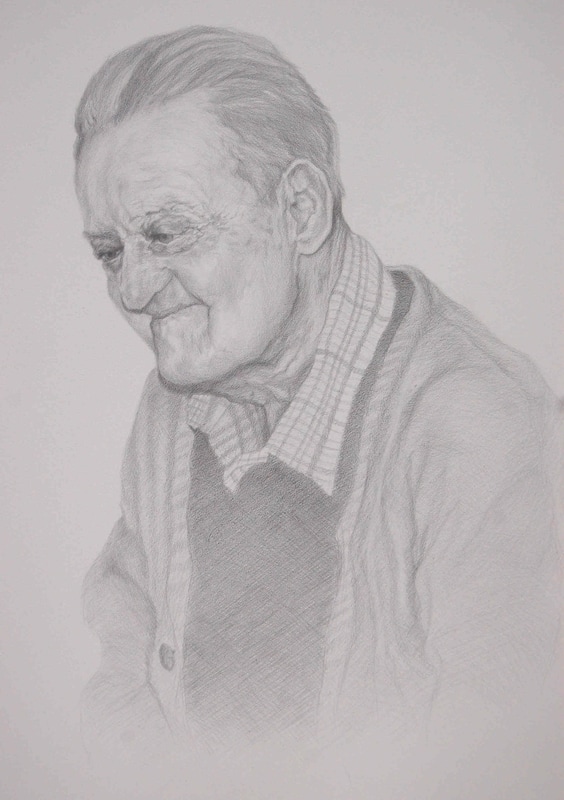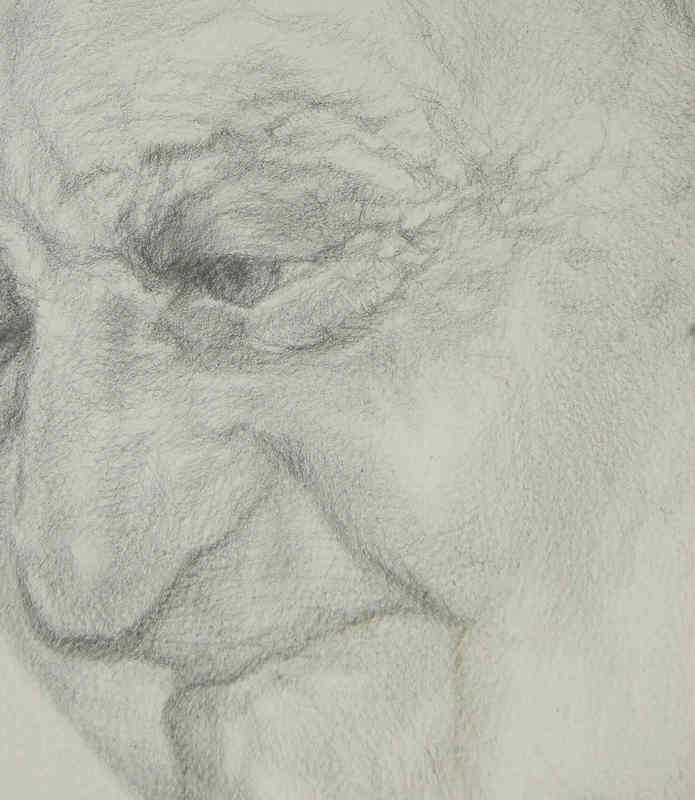
Welcome to my new website! Spring is on its way and I’ve been working on creating a new, lemony-fresh new site that will work on tablets and phones. It’s still a work in progress, and I will be adding new artwork over the coming weeks. In the meantime, I thought I’d start my new blog by showing you what is on my easel now: a portrait of my Grandad in silverpoint.
What is silverpoint, you ask? Silverpoint—also known as metalpoint—is a very old drawing medium. Essentially, it’s a stylus made of .999 pure soft silver. Imagine a mechanical pencil that uses a silver wire instead of a pencil lead, and you’ll have the idea. The silver used for silverpoint drawing is soft, which means that when you drag the silver across your drawing surface, some of the silver is scraped off and leaves a mark. This won’t happen on paper: you have to work on a surface that is a little bit abrasive and has some tooth to grab the silver. Silverpoint had something of a revival in the 19th century, but it was probably at its most popular from the 14th century to the beginning of the 16th century. Artists like Leonardo da Vinci, Sandro Botticelli, Fra Filippo Lippi, Albrecht Dürer, and Raphael all used silverpoint. During the Renaissance, new art materials were developed, and silverpoint gave way to the graphite pencil. I bet your inquiring mind is wondering why artists traded silverpoint for graphite? Well, the reasons are very practical ones. Silverpoint is not very forgiving; you can’t erase it. It’s not as convenient as a pencil, because you can’t draw on plain paper or any other unprepared surface. The other drawback is that you can’t create the darkest darks with silverpoint; it has a smaller range of tonal values than a graphite pencil. So, why draw with silverpoint instead of a pencil? Because it makes beautiful, delicate, silver-grey lines that will tarnish over time. The drawing will develop its own patina as it ages. That’s what attracted me to silverpoint: the idea that the drawing will age and change and take on a life of its own. So exciting! Silverpoint is difficult to photograph because the silver reflects the light, but hopefully this picture gives a sense of the delicate line that silverpoint creates:
I need to learn patience—but how long will that take?
I’ve done 5 or 6 silverpoint drawings so far, but none have really started to oxidize very much yet. The research I’ve done suggests that the amount of time it takes for a drawing to tarnish depends on the air quality: drawings will tarnish more quickly outdoors, and more quickly in industrial cities where there is more sulfur in the air. Other artists have told me that they speed up the process by sealing their drawings in a box, along with some liquid sulfur (called “liver of sulfur,” for reasons that are not clear to me). I plan to experiment with exposing my drawings to sulfur to see what happens, but I think I’ll wait until the warm weather. I suspect that experimenting with sulfur is like playing the bagpipes—an activity that’s best done outside.
0 Comments
Your comment will be posted after it is approved.
Leave a Reply. |
A brush with life
I love the smell of art supplies in the morning! This space is to share info about the materials and techniques that I am trying, as well as some pictures of my work in progress. Archives
August 2020
Categories
All
Copyright Jennifer Foster
|

 RSS Feed
RSS Feed